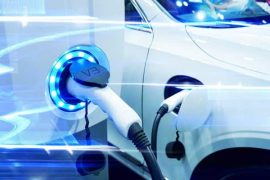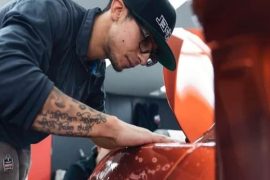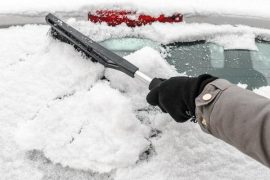Зміст
You don’t need to convince anyone how important a good braking system is. Although modern cars are equipped with many sensors, none of them monitor the condition of the brake discs. Find out how to know when it’s time to replace them.
Does your car have disc brakes?
Disc brakes are an invention that has been known for at least a hundred years, but only in recent decades has it become widespread among passenger cars. Today on our roads it is easy to see cars equipped with another type of brakes – drum brakes. They have weaker braking power and dissipate heat less well, so they are susceptible to so-called damping, i.e., deterioration in braking power caused by high temperatures. These features, coupled with their heavy weight and complex design, mean that they are typically found on the rear axle of small, low-cost city cars.
The type of braking system our car is equipped with can be determined by looking at the space behind the discs. If we notice a shiny rotating disc and a stationary caliper with brake pads, we can be sure that our car uses a more modern solution, that is, a disc brake. If we notice the presence of an object that resembles a closed metal can, it means that drum brakes are applied to the axle.
Brake components
Disc brakes are made up of several main components. This:
- a disk mounted on the axle of a car that rotates with the wheels,
- fixed clamp,
- friction linings, commonly known as brake pads.
In some cars we can find another extremely useful element – a brake pad wear sensor built inside the friction lining. When a brake pad is worn to its limit, the sensor contacts the disc and signals the wear, and a message appears on the dashboard or vehicle system, informing the driver that it is time to visit a service center. This is an extremely convenient and useful invention that relieves the driver of the frequent need to check the condition of the brakes and monitor common signs of brake wear. Unfortunately, it only monitors the thickness of the friction lining, so the warning light will not come on even if the discs are very worn.
Operation and consumption
Experts advise replacing brake discs every 70-80 thousand kilometers. There is also an opinion that they should be changed every second brake pad replacement. The problem with the accuracy of this type of assessment is that brake wear depends mainly on driving style and conditions. Also, important is the weight of the car, the size, and width of the wheels, the condition of the tires and many other factors that can affect their performance.
For example: drivers who drive mainly in urban conditions use the brake much more often than those who drive on the highway, where, under favorable conditions, they can travel tens of kilometers without braking. On the other hand, speeds in the city are much lower than on the highway, and sudden braking from speeds above 100 km/h can take its toll on our rims.
Common symptoms of brake disc wear
If while driving we notice that our car is braking worse, or we hear a squeaking sound when we press the brake pedal, this may indicate wear on the discs. The problem with recognizing these types of symptoms is that they come on very slowly and may not be noticeable during everyday driving. At first the squeal will be barely audible and the braking distance will be slightly longer. To make matters worse, we can easily become accustomed to this state of affairs and simply ignore the noise and deterioration of our braking system until a more serious failure occurs.
It is worth knowing that brake discs, like brake pads, wear out. Of course, this happens much more slowly, but the loss of friction surface is easily noticeable. Our suspicions should be raised by any inequality, especially the appearance of a so-called edge on the outer part of the disk. Potholes, cracks, war page or corrosion on the surface of the disc can also mean that our braking system is not working properly. To definitively determine whether a disk needs to be replaced, it must be measured. Limits vary depending on the manufacturer, but it is assumed that a loss of just 2 millimeters on the inside and outside the disc qualifies it for replacement.
Problems with vibration on the steering wheel
What should you do if your car suddenly starts to vibrate when braking? This can also be a sign of worn discs, but can also occur immediately after replacement, when the surface of the discs has become deformed. This issue can occur when the discs overheat and then cool down quickly (for example, when braking hard and hitting a puddle). There may also be a build error, i.e., the disc is crooked on the hub, so their replacement should be entrusted to qualified specialists. It is also worth remembering that non-original parts are usually more susceptible to any deformation.
If you feel vibrations in the steering wheel or pulsation in the pedal when braking, it is worth visiting a workshop, as vibrations are easily transmitted to other parts of the chassis and can lead to many expensive breakdowns. The good news is that our shields don’t necessarily end up in the trash. If their thickness is still within the manufacturer’s specifications, any vibration will be eliminated by resurfacing the discs, which will smooth out their surface.








